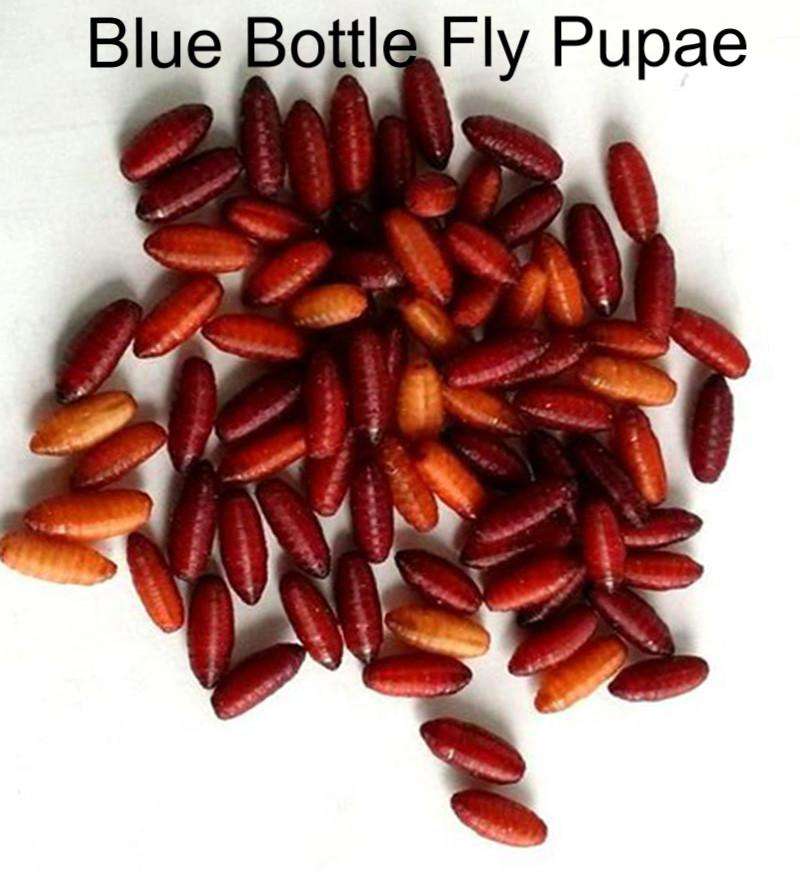
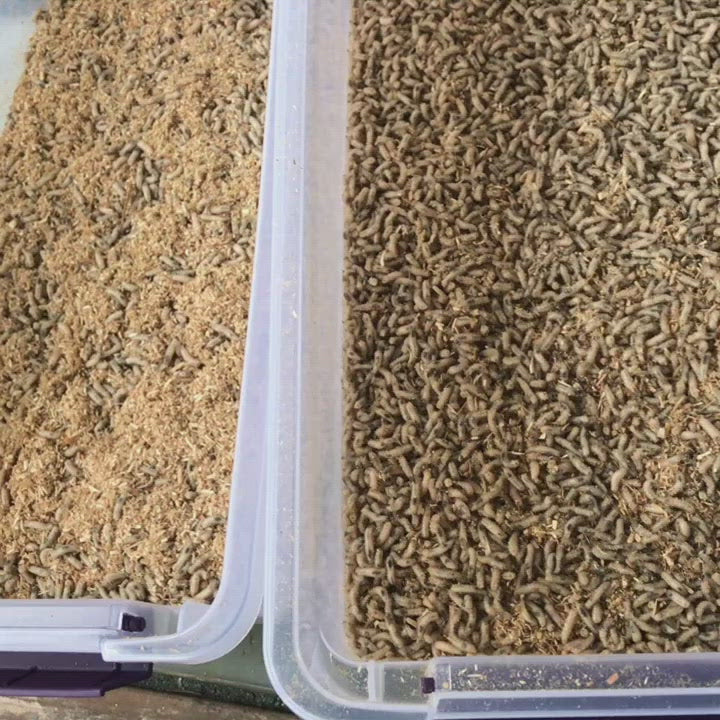
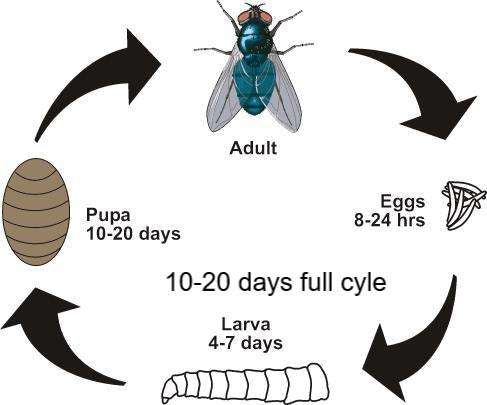
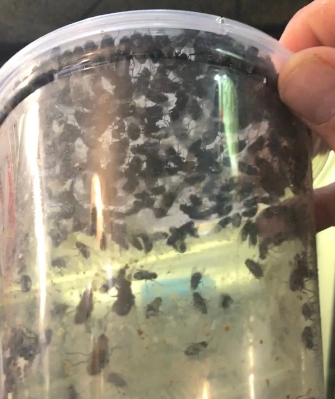

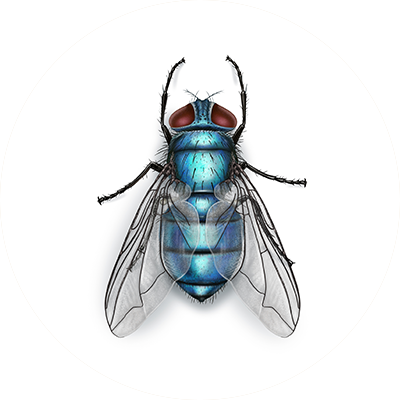
Blue bottle fly pupae pollinators feeder flies. Bulk pupae New improved!
$12.00 - $500.00$0.00
Blue Bottle Fly Pupae- Wholesale Prices
New, larger, fresh pupae and larvae! These pupae from the Blue Bottle Fly will turn into adult flies in several days. The exact timing depends on how they are stored and what temperature.
Note: There is a national shortage of blue bottle flies due to extreme weather and wildfires. Delays may be unavoidable please order in advance.
100% GROWN & SOURCED IN THE U.S.A
- 100 Larvae pupae minimum order
- We always have 100,000 fresh in stock
- We receive fresh deliveries of 20,000 - 60,000 twice a week
- Measured by volume.
Info
Binomial name Calliphora vicina
Common name: Blue bottle,European blowfly.
C. vicina was introduced and is known as a blue bottle fly because of the metallic blue-gray coloration of its thorax and abdomen. The blue bottle fly is approximately 10-11 mm in length.
C. vicina goes through five generations yearly at a threshold temperature of 27° C (81° F). A female C. vicina can lay up to 300 eggs on fresh carrion or open wounds. The larvae go through three instar stages. The first instar hatches in approximately 24 hours after the eggs are laid. It goes through its second instar in 20 hours and its third instar in 48 hours. Under favorable conditions, the larvae feed for about three to four days. When the larvae complete their development, they disperse to find an adequate place to pupate. The C. vicina pupa stage lasts about 11 days. At 27° C, C. vicina’s life cycle lasts approximately 18 days. Climatic factors, such as temperature, are known to influence egg-laying and the development of instar larvae. The life cycle can last a little less in warmer weather, and the life cycle takes a little longer in cooler temperatures.
On average, the life cycle of flies and blue bottles is about 6 weeks. However, in hot conditions, the time taken for the fly's eggs to become maggots and then fly could be as little as 7 days.
100% GROWN & SOURCED IN THE U.S.A
- 500 Larvae pupae minimum
- We always have 10,000 fresh in stock
- We receive fresh deliveries of 10,000 - 20,000 twice a week
These are used for feeders and pollinators
-
Blue Bottle flies are replacing the use of cutter bees and honey bees in large walk-in cages, pollinating vegetable crops including broccoli, lettuce, garlic, peppers, onions, carrots, radishes, cauliflower, buckwheat, sunflowers, and canola.
They work in greenhouses readily whereas bees tend to get depressed.
We ship them to you in the dormant larval stage then hatch within 48 hours at 80 degrees F.
They are free from pollen, mold, or bacteria.
- The flies have been identified by the USDA Systematic Entomology Lab in Maryland as DIPTERA Calliphoridae (Ref: TSU Lot #96-8464). Its common name is the Blue Bottle Fly
- Blue Bottle flies are carefree – they work in small areas (selfing cages) whereas bees tend to get depressed.
- Blue Bottle flies are shipped to you in the dormant (pupae) stage and will hatch within 48 hours at 80 degrees F.
- Blue Bottle flies are grown on fish, free from pollen, mold or bacteria, the only contact is the fish and white wood sawdust.
- Blue Bottle flies replace cutter and honey bees in large walk-in cages.
- Blue Bottle flies hatch and “work” at cooler temperatures than do houseflies and bees.
- Blue Bottle flies feed on plant nectar.
- It is relatively easy to adjust quantities in cages — more is just a phone call away.
- If a bee leaves the tent, he’ll come back with possible contamination, whereas a fly is gone for good
GREENHOUSE
Our flies are being used successfully in greenhouses year-round for many types of vegetables and canola.
They are also being used to increase production of vegetable crops grown in greenhouses, such as peppers and tomatoes.
AVAILABLE YEAR AROUND
Blue Bottle fly pupae are available year-round from USMantis in small or large quantities. They are only a phone call away and can be delivered the next day.
APRIL – AUGUST
Due to the pollinating requirements during this time period, we request you have a tentative pollinating schedule submitted to us for the current season at least 3 weeks before anticipated flowering. We will guarantee the amounts required ONLY if scheduling is done beforehand.
We will do our best to meet your needs. We realize that weather is a determining factor in your needs, and we are flexible. We have extra in stock each week in the event of a change in weather. Rain, wind, or a hot summer day can change your requirements.
You will want to have some fly pupae on hand before you need them, but they can be stored for a week or so at just above freezing.
We would like to suggest that your first order of flies arrive 7 days in advance in case of any delays or freight damage OR early flowering.
PRE-PACKAGED DISPOSABLE POLLINATORS
The advantages are:
•Pre-measured—Guaranteed quantities
•Protection from the elements and chemical residues
•Labor savings– only onsite labor is necessary to place the bag into the cage.
CARE INSTRUCTIONS CAN BE DOWNLOADED WITH ORDERS
Blue bottle pupae can be stored in the fridge for up to a month, after which time hatching rates will naturally decline. Some flies will continue to hatch, but it will get more inconsistent and unreliable with time. We recommend buying more pupae every three weeks to ensure maximum hatch rates.
If you accidentally hatch out too many flies at once or prefer to feed your mantis live, already hatched flies, no problem – you can store adult flies in the fridge, too! Just occasionally supply them with food and water; you can keep them in the refrigerator for up to a few weeks.





